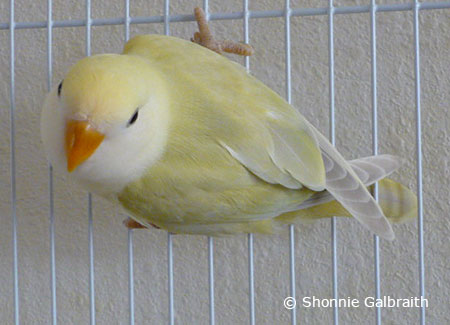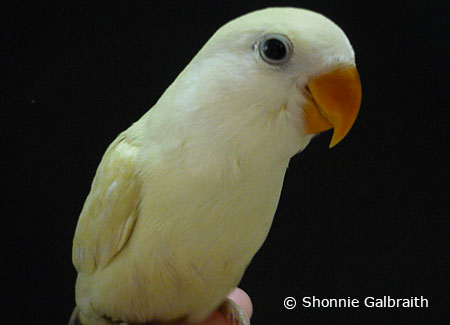Raising a Tame Lovebird: Socialization
Lovebirds are fearless creatures that can quickly become nippy if
proper socialization guidelines are not practiced from day one. Proper
socialization is teaching and showing your lovebird how to deal with new
events, new people, and new surroundings. Setting guidelines are crucial
if you expect to have a friendly companion that everyone can benefit
from. Though we tend to overlook lovebird development, it is important
that a good foundation is built from the beginning.

Lovebird Socialization
Socialization needs to begin as soon as you receive your lovebird. Some breeders choose to start the socialization process as young chicks and continue the processes until the baby lovebird is sold. Many breeders will expose their babies to new surroundings, new toys, new foods, and new people all before 8 – 10 weeks. This helps them cope with change and to adapt to changes later on in life. In a sense, this random exposure is teaching the lovebird to enjoy variety. In the wild, lovebirds are exposed to change daily and all must perceive it as a part of life, not as something negative. So how come many lovebirds have problems accepting change in captivity? Because some owners are unaware of how to ease their new pet into their new surroundings and daily life; this hinders the bird from developing into a lovable pet. Here is an example, imagine bringing home a new baby lovebird. You become excited and spend all your time with him. During the first six months you continually repeat this pattern until your schedule becomes busy and unfortunately, you are not able to spend as much time as you wished. As a result, your baby, who is now a young adult, starts to scream or pull his feathers out. He also starts to bite every time you pick him up. What happened?
The bird was shown or had the impression that you would be there all
the time. How so? Because when he was new, the owner failed to teach the
lovebird to play independently. Now the lovebird, which is set in his
ways, will not play by himself and only seeks the person who was once
spending time with him for attention. It’s a given fact that our lives
change constantly, if proper techniques are used form day one, the
lovebird will be more willing to adapt to your busy schedule.
Another example of improper socialization comes from owners who do not
allow the bird to interact with all family members. Unintentionally,
they spend more time with the bird or other family members choose not to
participate in dealing with the bird. This is the wrong approach and
will cause more problems down the road. When a female lovebird reaches
sexual maturity, she can chase or lash out at anyone whom she sees as a
threat to her and her bonded owner. Though males are not as prone to
this, they can still bite out of jealousy. Before an explanation is
given to remedy this problem, it’s important to understand that
lovebirds are hardwired to bond strongly to their mates and protect
anything they perceive as a threat to their bond. Because of this, many
people run into problems and blame the lovebird. So how can you help
minimize the chance of having an intolerable lovebird? By letting
everyone in the family interact with him. We don’t buy dogs and only let
one family member interact with him—the same should apply for your
lovebird.
Lovebird Socialization Tips

Here are a few tips to help point you in the right direction for a better socialized lovebird.
Expose your lovebird to new environments. Move the cage around every few weeks to new locations. Take your lovebird with you to a park or to run small errands. (Using a parrot leash is highly recommended).
Teach your lovebird to enjoy toys and teach him to be independent. An independent lovebird should receive an even amount of time spent with you and an even amount of time learning to play with toys. Instead of putting a bunch of toys in your birds cage at the same time, rotate them around every week or so, like 2 or 3 at a time. This keeps the bird curious and more interested in playing with them.
Teach your lovebird to gobble oatmeal, cream of wheat, or hand feeding formula from a spoon. Why? If your lovebird ever needs to take antibiotics or medication, it can easily be done without forcing it down the bird’s beak.
Let the lovebird try new foods daily (right away if handfed) to avoid a seed eating only lovebird.
Don’t respond to loud chirps or calls. Don’t even make eye contact. This can lead to screaming and an irritated owner.
If a baby lovebird should take longer than eight weeks to wean, the breeder can try using soft warm foods to help convert the bird over to solid foods. Almost always, warm foods will trigger a feeding response. Taking small chunks of food between the breeder’s fingers will most certainly make the baby interested. Most baby lovebirds will investigate this and try to nibble on the food. Additionally, fresh pumpkin, squash, beans, or broccoli should also be provided.




